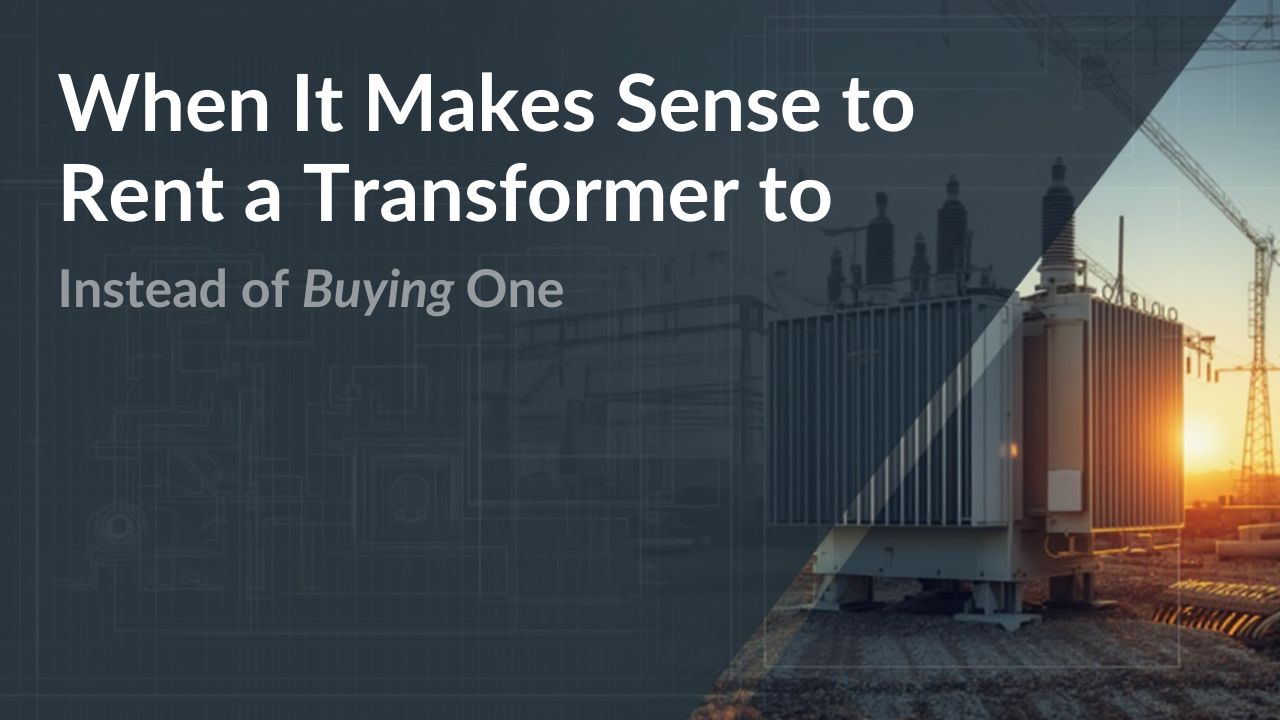

Not every transformer requirement is permanent.
Some setups only need power support for a fixed stretch of time. Others run into emergencies or delays and need a fast solution while waiting for a long-term fix.
That’s when renting starts to feel more practical than owning.
Rental transformers serve more than backup needs. They fill gaps. They support upgrades. And in certain cases, they help teams avoid spending more than the situation calls for.
Many industrial jobs have defined lifespans. Think of a plant shutdown, a seasonal expansion, or a construction site with temporary load needs.
Buying a transformer in these cases means investing in equipment that might sit idle after the job ends.
Rentals solve this cleanly. You size it for what you need, use it until the project wraps, then move on. The unit doesn’t become a storage or asset management burden once the work is complete.
Waiting on a new transformer takes time. Manufacturing slots, shipping delays, and custom specifications stretch timelines quickly.
If a transformer fails during production, the clock turns into the real problem.
A rental steps in while the long-term unit is still being built or shipped. It brings the plant back online, keeps work moving, and gives you space to think instead of react.
The work continues while the permanent solution takes shape quietly in the background.
During system upgrades (like shifting to higher-capacity units or reworking your plant’s load distribution) a rental can keep operations steady while permanent changes are underway.
You might need to isolate parts of your network or run in parallel with older infrastructure.
Renting gives you the flexibility to test your design assumptions and verify new setups under real conditions. It also helps reduce downtime during transitions, especially when multiple parts of your electrical system are being reconfigured at once.
Buying a transformer involves capital expense. That means approvals, budgeting cycles, and long-term asset management.
In contrast, rentals fall under operating costs and are often easier to process when time is tight.
This makes a difference for businesses working with seasonal budgets or unpredictable timelines. Rentals keep the system running without tying up large funds in a permanent purchase that may not align with future load changes.
Some loads are temporary by design.
A seasonal pump. A short expansion phase. A testing line that runs for a few months before full commissioning…
Buying a dedicated transformer for these moments locks you into equipment you may not need later.
Renting lets the transformer leave when the demand leaves. Your system stays sized for what it handles most of the year, rather than the rare peaks. The unit comes in, does its job, and exits without adding maintenance or storage to your workload.
Renting a transformer makes sense when speed, flexibility, or short timelines take priority. It helps you keep systems stable without committing to long-term assets prematurely.
From what we’ve seen in the field, rental transformers often support expansion projects, grid upgrades, and contingency plans more smoothly than a rushed purchase.
Our team supports transformer rentals as part of a broader solution approach—sized, delivered, and serviced to match real conditions on the ground. Get in touch with us to learn more.